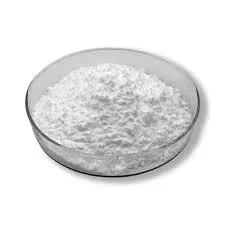
Jul . 28, 2024 15:52 Back to list
Quality Hydroxypropyl Methyl Cellulose Production from Reliable HPMC Manufacturers Worldwide
HPMC A Versatile Polymer from Hydroxypropyl Methylcellulose Factories
Hydroxypropyl Methylcellulose (HPMC) is a versatile, non-ionic cellulose ether that has gained popularity across various industries, including pharmaceuticals, food, cosmetics, and construction. HPMC is produced in specialized factories that adhere to strict quality control measures to ensure the product's purity, consistency, and functionality. This article explores the significance of HPMC factories, the manufacturing process, and the wide range of applications of this remarkable polymer.
The Manufacturing Process of HPMC
The production of HPMC begins with the natural polymer cellulose, which is sourced from wood pulp or cotton. The cellulose is first treated with a series of chemical reactions involving methylation and hydroxypropylation. This process modifies the molecular structure of cellulose, enhancing its solubility in water and improving its functional properties.
In a typical HPMC factory, the process starts with the purification of cellulose to remove any impurities that may affect the final product. This purified cellulose is then mixed with alkali and reagents in controlled conditions to achieve the desired degree of substitution, which is critical for determining the physical and chemical properties of HPMC.
Once the desired modifications are achieved, the mixture undergoes a drying process to produce dried HPMC in powder form. The powder is then milled and sieved to obtain consistent particle sizes, ensuring optimal performance in various applications. Quality control is paramount during all stages of production, with rigorous testing to confirm that the HPMC meets industry standards.
Applications of HPMC
hpmc-hydroxypropyl methyl cellulose factory

The versatility of HPMC makes it suitable for a wide array of applications. In the pharmaceutical industry, HPMC serves as a binding agent, film-forming agent, and controlled-release excipient in tablet formulations. Its ability to swell and form a gel in the presence of water allows for the gradual release of active ingredients, improving medication efficacy.
In the food industry, HPMC acts as a thickener, emulsifier, and stabilizer, enhancing the texture and stability of various food products. It is commonly found in sauces, dressings, and dairy products, where it helps to maintain consistency and prevent separation.
The construction industry benefits from HPMC's water-retention properties, making it an essential additive in cement-based products, tile adhesives, and mortar formulations. HPMC improves workability, enhances adhesion, and helps prevent cracking in building materials, contributing to longevity and durability.
Environmental Considerations
As environmental concerns continue to rise, HPMC manufacturers are adopting sustainable practices in their production processes. Many factories are working towards sourcing renewable raw materials and minimizing waste. HPMC is also biodegradable, offering an eco-friendly alternative to synthetic polymers in various applications.
Conclusion
HPMC continues to be a crucial polymer in multiple industries due to its unique properties and versatility. The dedicated factories that produce high-quality hydroxypropyl methylcellulose play a pivotal role in ensuring that this invaluable compound meets the demands of modern applications. As research and development in this field advance, the potential for new applications and improvements in HPMC technology remains vast, promising exciting opportunities for innovation across diverse sectors.
-
Versatile Hpmc Uses in Different Industries
NewsJun.19,2025
-
Redispersible Powder's Role in Enhancing Durability of Construction Products
NewsJun.19,2025
-
Hydroxyethyl Cellulose Applications Driving Green Industrial Processes
NewsJun.19,2025
-
Exploring Different Redispersible Polymer Powder
NewsJun.19,2025
-
Choosing the Right Mortar Bonding Agent
NewsJun.19,2025
-
Applications and Significance of China Hpmc in Modern Industries
NewsJun.19,2025







